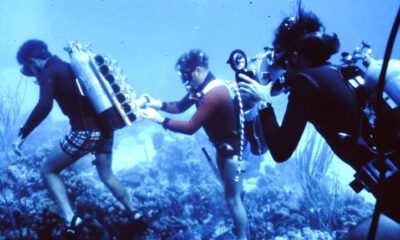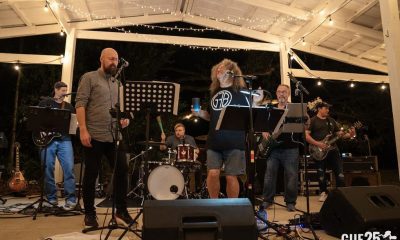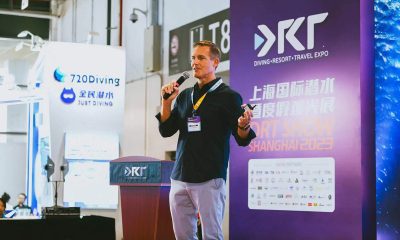Community
How I Became a Scientific Diver
What is a scientific diver? The answer depends on who you ask. Jenn Thomson, a recipient of Global Underwater Explorers 2022 NextGen scholarship, explores worldwide definitions for scientific diving, and how courses can give you the skills to assist in scientific operations, even if you don’t get the distinction.
By Jennifer Thomson, with insights from Edd Stockdale and Erik Wurz. GUE Scientific Diver – 23rd April 2023. Photos courtesy of J. Thomson unless noted.
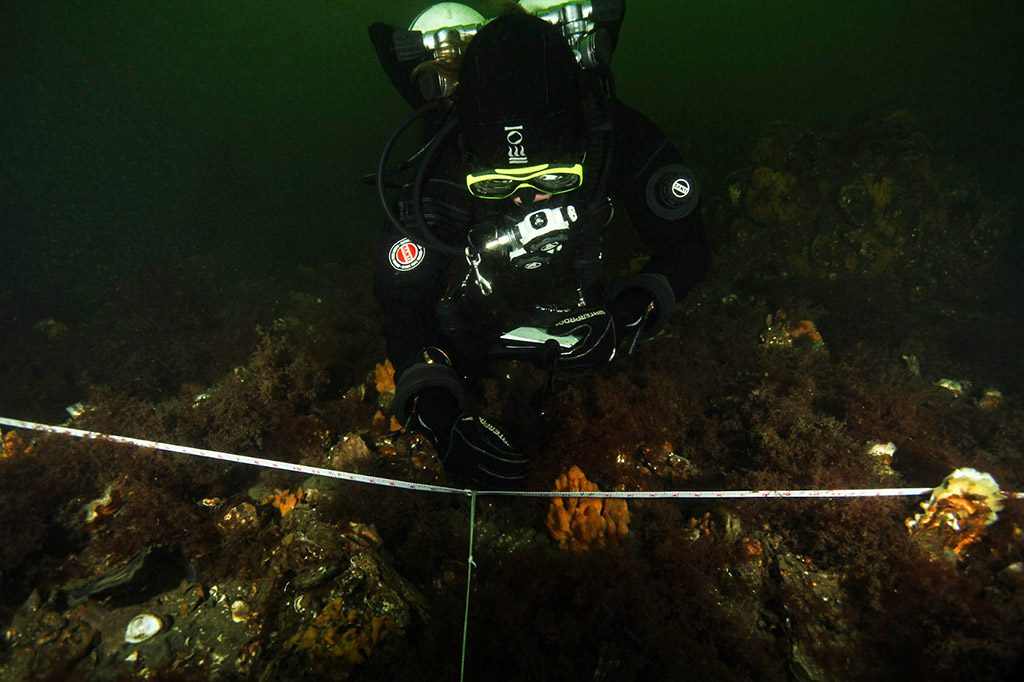
I wear many hats, but first and foremost, I consider myself a scientist.
I have the credentials: a diploma in Human Spaceflight, a bachelor’s of science in Zoology, an honorary research fellowship in small mammal ecology, and a master’s of science in marine management. I’ve assisted with coral propagation projects in the Maldives and Thailand, and biodiversity surveys in Mozambique. I also learned to scuba dive.
This must make me a scientific diver, right?
Wrong.
These experiences, then as a PADI Open Water diver with 20 dives, did not warrant “scientific diver” on my CV.
I recently found two photos taken exactly a year apart—from before and after this realisation. The image below was taken on April 23, 2022, back when I called myself a scientific diver. In reality, I did not meet any country-specific official qualifications at the time.
Here, I was conducting reef transects and hydrophone deployments in the coastal waters off Jeddah, Saudi Arabia, as a field research technician. My job title made it seem like I knew what I was doing. Granted, I was not walking on the corals unlike some individuals I have seen in past jobs. However, I remember this day being more focused on my trim and buoyancy than the quadrats, and feeling like I lacked the competence to live up to my job description. I decided to apply for Global Underwater Explorers’ NextGen scholarship, which gives one year of tuition-free training and other perks to a diver between the ages of 21 and 30.
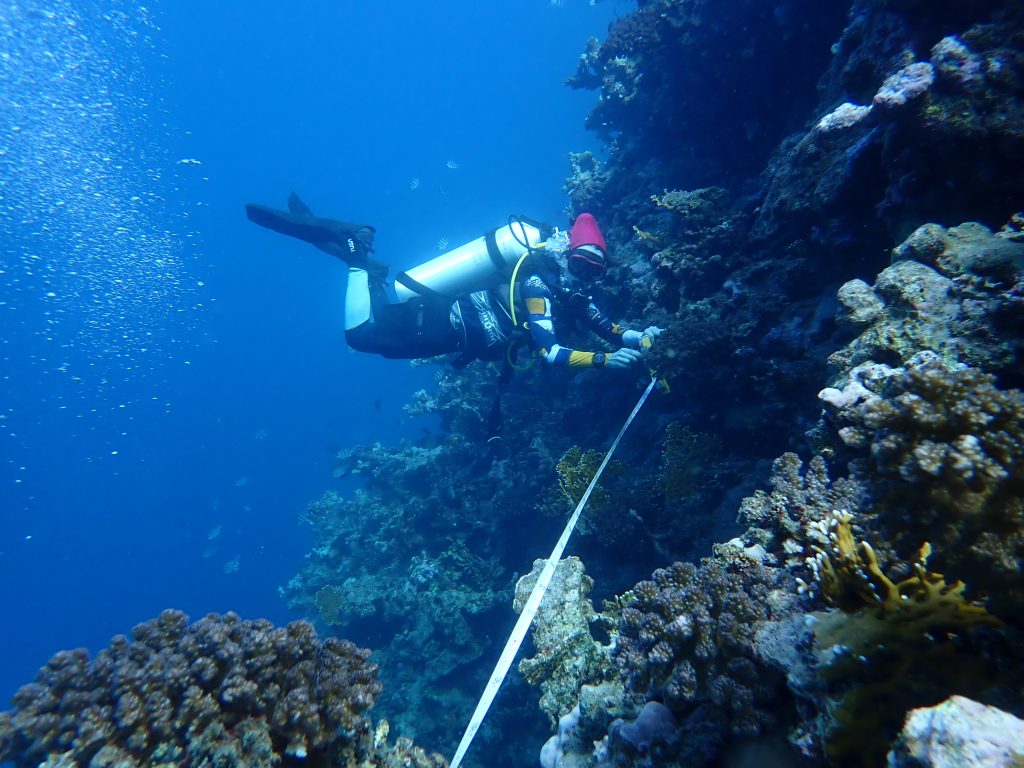
Fast forward through a year of growth, foundational skill refinement, and scientific project experience. The header photo above was taken on April 23, 2023, on the penultimate day of a GUE Scientific Diver course in the Netherlands. From the conditions to my kit configuration to the way I reel out a tape measure, I am much more confident in my abilities and feel like I can live up to my own expectations.
So now can I call myself a scientific diver? It depends on who you ask.
Scientific Diving: The Semantics
Scientific diving is the use of underwater diving techniques to perform work with the goal of scientific advancement and/or knowledge acquisition. This can carry over to any type of aquatic realm in any type of discipline (marine chemistry, geology, or archaeology, for instance).
Although there are some defined paths that one tends to go down for certain underwater jobs (for example, natural history filmmakers who need a silent presence for the perfect shot often turn to CCR), specific legal definitions for scientific diving can actually vary based on location.
In reality, since there are no intentional standards for the term, one can use the scientific diver label if they’re an open water diver, are a professional scientist (with degrees); or they have acquired hard hat or decompression training due to oil industry regulations from a more stringent country.
Scientific divers can be students, researchers, technicians, or volunteers who dive within regulated institutions such as universities, organisations, museums, and aquariums.
It turns out I wasn’t so far off in the early days of my diving journey. I have personally journeyed from citizen-science diver, to institutional-academic scientific diver, to a GUE Scientific Diver (with a masters of science). All in all, it appears there is no universal definition; it just depends where and how one works!

Scientific Diver Training Approaches
So what if you wanted a standalone official qualification for scientific diving?
There are professional, national-level qualifications that separate scientific diving from sport, recreational, or commercial diving. However, they require their own special branch of occupational training, typically specific to surveying activities. These diving programs also have to operate under a diving control board, have written standards and procedures, and also require comprehensive emergency plans to be exempt from commercial diving standards.
One such national governing body controlling scientific diver training is the American Academy of Underwater Sciences (AAUS) formed in 1977. The AAUS allows research teams to carry out important survey work without adhering to commercial diving regulations (no hard hats or deco obligations are mandatory for offshore work!). This is because AAUS is self-regulating and has a consensus of minimum standards.
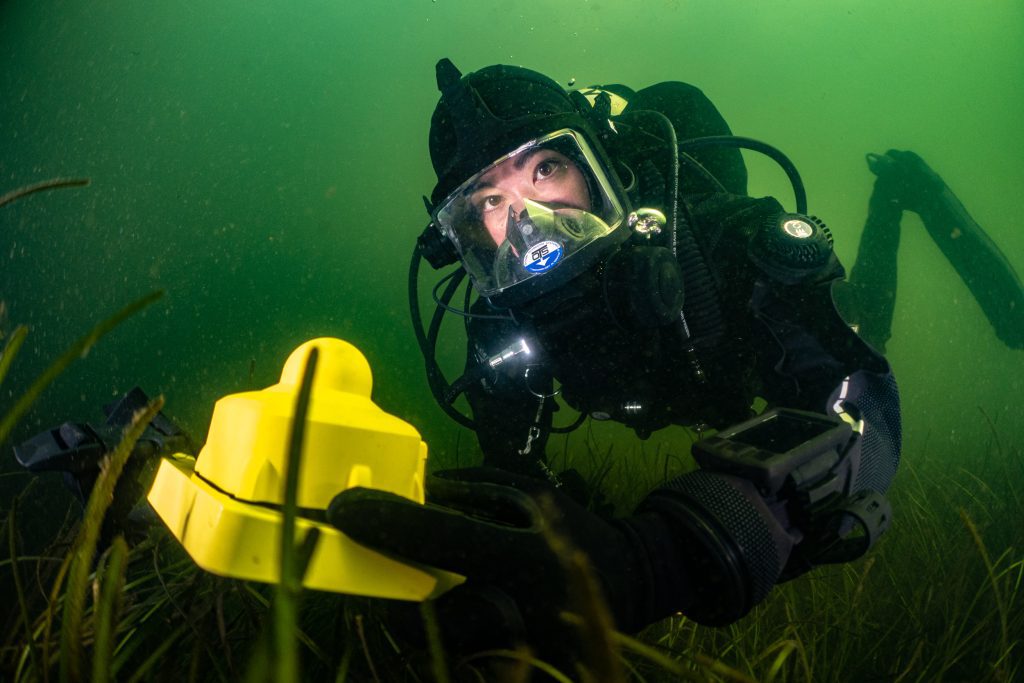
To provide a standard throughout Europe, a scientific diving committee was formed in 2007 (and a diving panel in 2008), based on collaborations from representatives in individual member states. It’s not an official governing body per se, but it allows individual countries to apply for recognition in another country if they meet certain standards across borders. These standards include the types of theoretical and practical knowledge one needs, skills to acquire (including surface supplied diving and full face masks), and the number and type of dives needed to achieve the standard-level certification or advanced upgrades. It is also important to note that the European panel carefully differentiates their framework— named Occupational Scientific Diving— to be distinct from defined recreational, commercial, or citizen science diving.
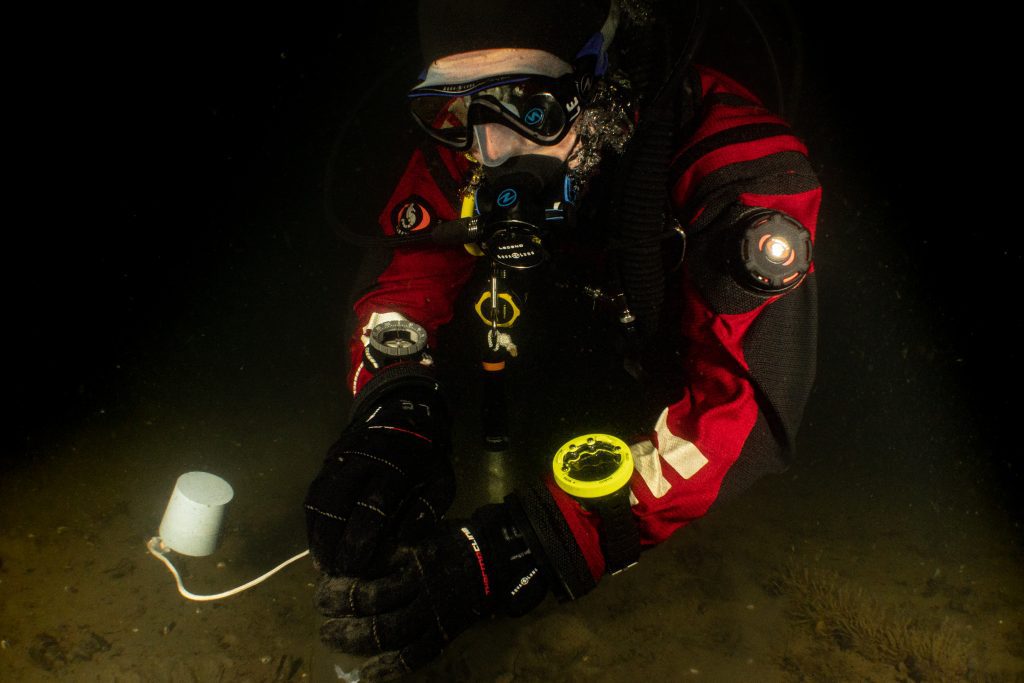
So where do you go to accomplish these dives in order to meet European Occupational Diver qualifications (standard or advanced)? The answer is that divers must build up to this over a number of years and then apply for recognition in a certain location or complete an internship.
One such example was the Finnish Scientific Diving Academy (FSDA) – a six-week course at the advanced scientific diving level. Students receive a Finnish professional diploma in scientific diving, and then apply for European professional recognition from the Finnish governing body. Students have specific training in areas such as navigation, boat work, communication systems, lift bags, and small projects, and their fieldwork dives help them meet the required number of scientific dives for official recognition. FSDA also incorporates human factors training to develop better teamwork, workshops on writing dive risk assessments, and using tech diving and emerging scientific technologies on future courses for the most current scientific skills (see more here, here, and here).
Gaining the skills for scientific operations
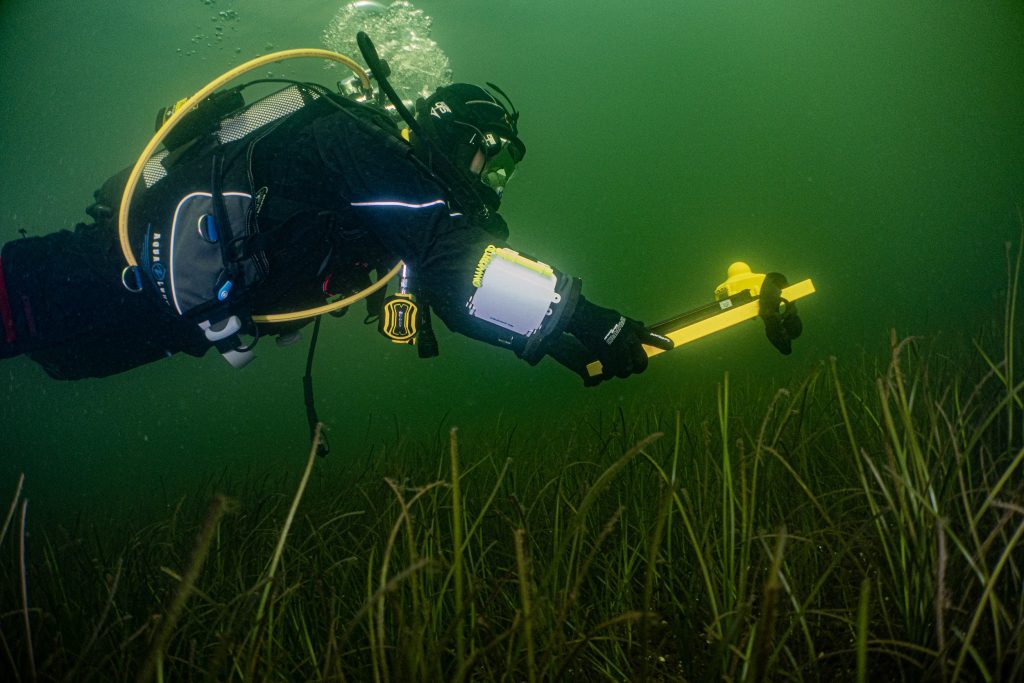
During my NextGen scholarship year, I focused on education, conservation, and skill refinement with regard to scientific diving. Therefore, I aimed to complete many GUE foundational courses; in particular, the Photogrammetry, Documentation, and GUE Scientific Diver courses.
I admit, the first time I looked at the courses, I thought that the GUE Scientific Diver automatically led to a professional qualification (akin to AAUS / European standards). However, this is not the case yet. GUE courses are generally not recognised in countries that have occupational diver regulation, but they are considered much more than citizen science training, for example, in UK’s ‘Seasearch’ programs, where individuals are conducting the activity on a volunteer or unpaid basis.
GUE’s Scientific Diver Course
While it doesn’t come with an official recognition, GUE Scientific Diver does offer a good foundation for trained divers to assist in data gathering. In addition, this course is only taught by three GUE Instructors, all of whom have marine science or scientific diving backgrounds themselves. And while there are no academic prerequisites for students, the GUE Science Diver course takes the time to explain the scientific process, steps for hypothesis testing, and how to conduct underwater experiments with appropriate methods, empowering both active scientists and citizen scientists to assist on projects in a greater capacity.
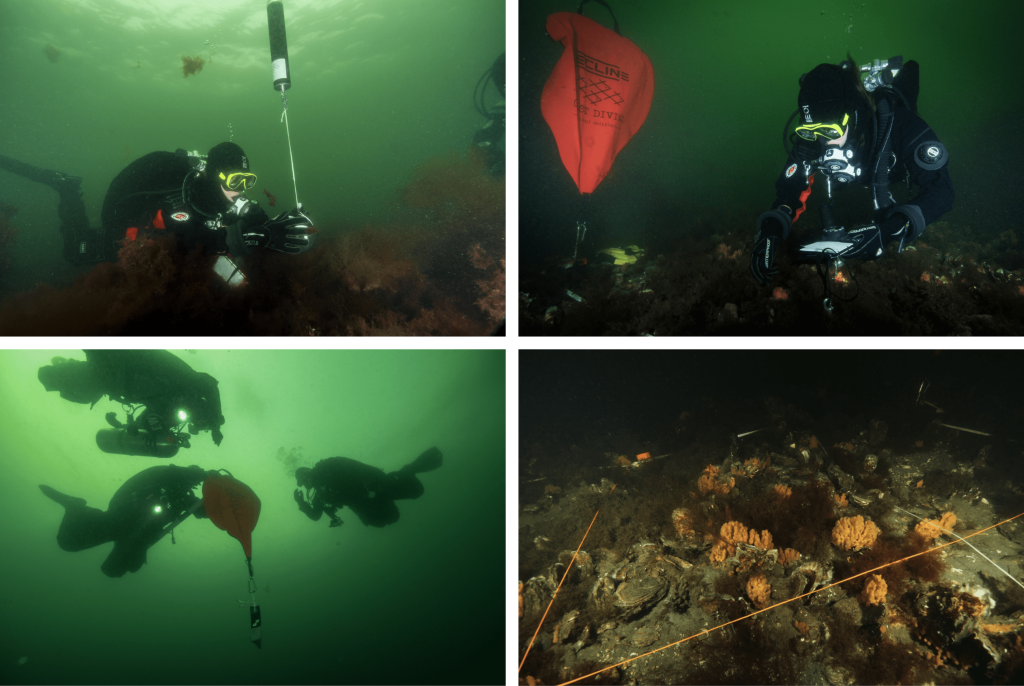
This was evident in my April 2023 Scientific Diver course with Erik Wurz in Zeeland (Netherlands), where there was a mixture of scientists and non-scientists alike. We all learned something new and advanced our existing capabilities. Over the course of five days, Erik gradually built us up from making site sketches (running the reel out from one singular point), to making quadrats and offsets along transects and baselines. We made a nine-square sampling grid underwater: we reeled out spools while back-kicking and laid out secondary datums onto transects for 90° angles while trying not to disturb the silt and algae. We also used various tools with which I had no prior experience, such as lift bags, stages, and airlifts. And, on the final day, we planned our own dive using any of the techniques learned before, and I even made a photogrammetry model based on my past experiences.
GUE Photogrammetry Diver
I had the chance to learn about photogrammetry in more depth in February 2023 in Deep Dive Dubai with John Kendall. He immediately piqued our team’s interest by showing us a 3D-printed skull made from a series of photographs meshed together in fancy ways (via making clouds and textures) using Agisoft Metashape software.
Photogrammetry—the science of making measurements from photographs—is covered (albeit in an abridged fashion) in both the GUE Scientific Diver and Documentation Diver courses. However, it is also good to complete as a stand-alone course if one wants to learn more about modelling larger projects, troubleshooting the software, or working in a team to capture something in a real-world scenario.

The concept sounds simple, but the practicalities are not. As someone who started to take topside photos using DSLRs, the settings of focal length, aperture, and shutter speed are different when considering underwear photogrammetry. One had to be very precise when finning and taking photos at a constant rate, as the overlap had to be sufficient to get all the photos to mesh together.
And of course, the subject matter had to work: using objects with high enough contrast points (patterns, textures, and colours) for the software to differentiate between points. This was highlighted when our first models of the course came out a bit, well, “melty”. For myself, the hardest thing was trying to maintain balance and positioning when holding a 20kg camera which was still heavy in the water and threw me off a bit. However, our team did manage to produce a huge model in the pool of Deep Dive Dubai, and these concepts did stay with me throughout the other courses I took.
GUE’s Documentation Diver
As the final course in the “foundational science trilogy,” I took the Documentation Diver course with JP Bresser in June 2023 (back in the Netherlands). The course includes training in basic photography and videography skills, survey and mapping techniques, content and report creation, and the process of documentation planning itself: team skills, communication, plan formation, and overall management.
As a holistic introduction to a whole host of project diving skills, it realistically could have been quadruple the length. It makes one want to learn everything in more detail later on, and every individual can take away something different from the course (for myself, it was producing comprehensive dive plans for underwater documentaries). Specific scientific methods are not included, but the basics of designing projects are perfect for citizen scientific divers wanting to take the next step and help out.
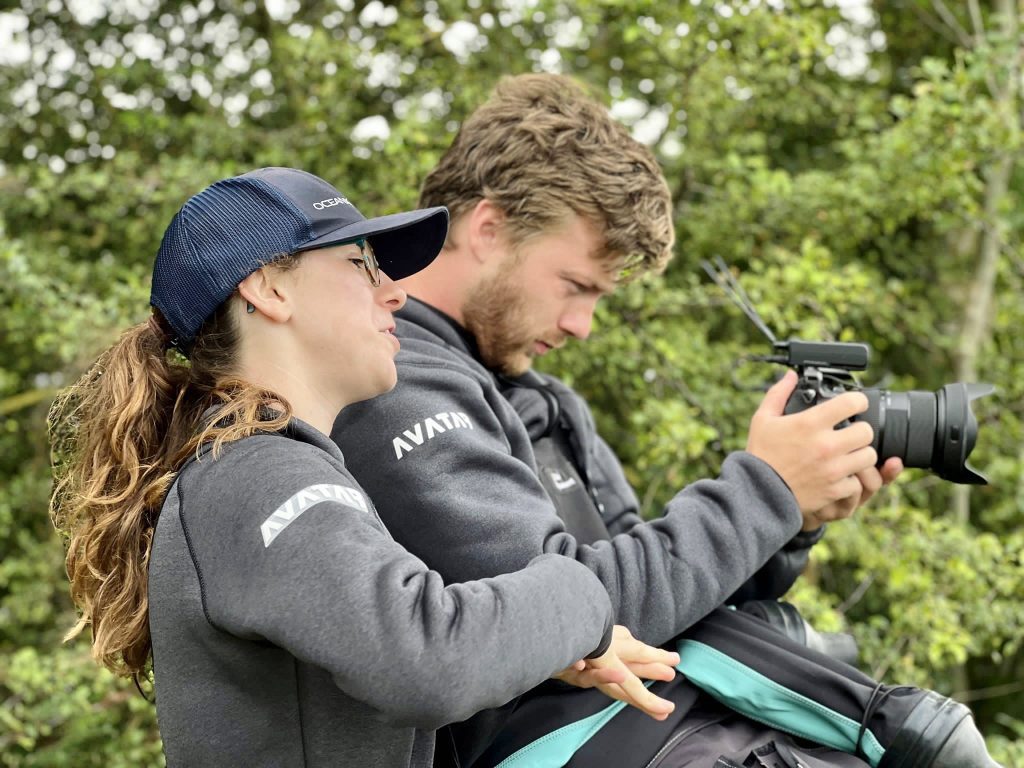
GUE SCI Diver as it relates to ‘official’ Scientific Diving
GUE Documentation Diver focuses on underwater media and project development, and Photogrammetry Diver focuses on modelling and software.
While neither of these courses render one an official ‘Scientific Diver,’ they are exceedingly useful for citizen scientists. Although one could say that this could add to the ‘noise’ of recreational science diving programs, I would argue against that – as the courses do not posit themselves as such.
GUE Scientific Diver is only a 5-day course with 6 dives. Most of the training matches European standards (surveys, airlifts, lift bags), but does not include aspects such as: surface supplied diver, full-face mask communications, rescue scenarios, night dives or diving physiology. Currently, to upgrade a GUE Scientific Diver qualification to European occupational level, one can register for European Scientific Diver after you gain the 25 scientific divers, complete Rescue and Oxygen Provider courses, and receive the final training remits.
This is an avenue I am thinking of for the future. All in all, I would still highly recommend the GUE Scientific Diver course, as it makes one a better interim ‘diving scientist’ – especially as the instructors are active professionals in this field, and are working on future official recognition.
Will there ever be unifying worldwide standards?
As I learn more about international standards, training agencies, and professional scientific diving, I want to share what I’ve learned so others need not feel as confused as I was. If I want to live a nomadic lifestyle as a scientific diver, I need to stay up-to-date on the changing standards landscape as the world attempts to unify. But what attempts are being made to unify scientific diving standards worldwide?
Attempt 1 is the World Scientific Diving Training Council (WSDTC), which was established in 2013 with the goal to publish Core Competency Standards for divers. At a time when international collaboration is paramount to combat ocean problems on a global scale, unifying standards is a way to provide ease of access to scientists. The desire to see increased international collaboration (by being able to recognise prior formal training) is acknowledged with representatives from Australia, New Zealand, America, and Europe, and these guidelines will hopefully see future prominence.
Attempt 2 was the formation of the International Organization for Standardisation (ISO) committee for scientific diving, again to establish an international set of standards for cross-border collaboration. These standards currently comprise 3 levels of training for scientific diving, but are still actively developing due to differences in globally diverse entities. Agencies also still don’t agree on whether or not these definitions are more suited to citizen, recreational, or indeed occupational science activities.
GUE and the future of scientific and project diving
GUE is known for its course and equipment standardisation to make efficient and safer procedures with globally-diverse teammates, and so our next challenge will be to form standards for GUE projects, future expeditions, and even for Project Baseline partnerships with citizen scientists.
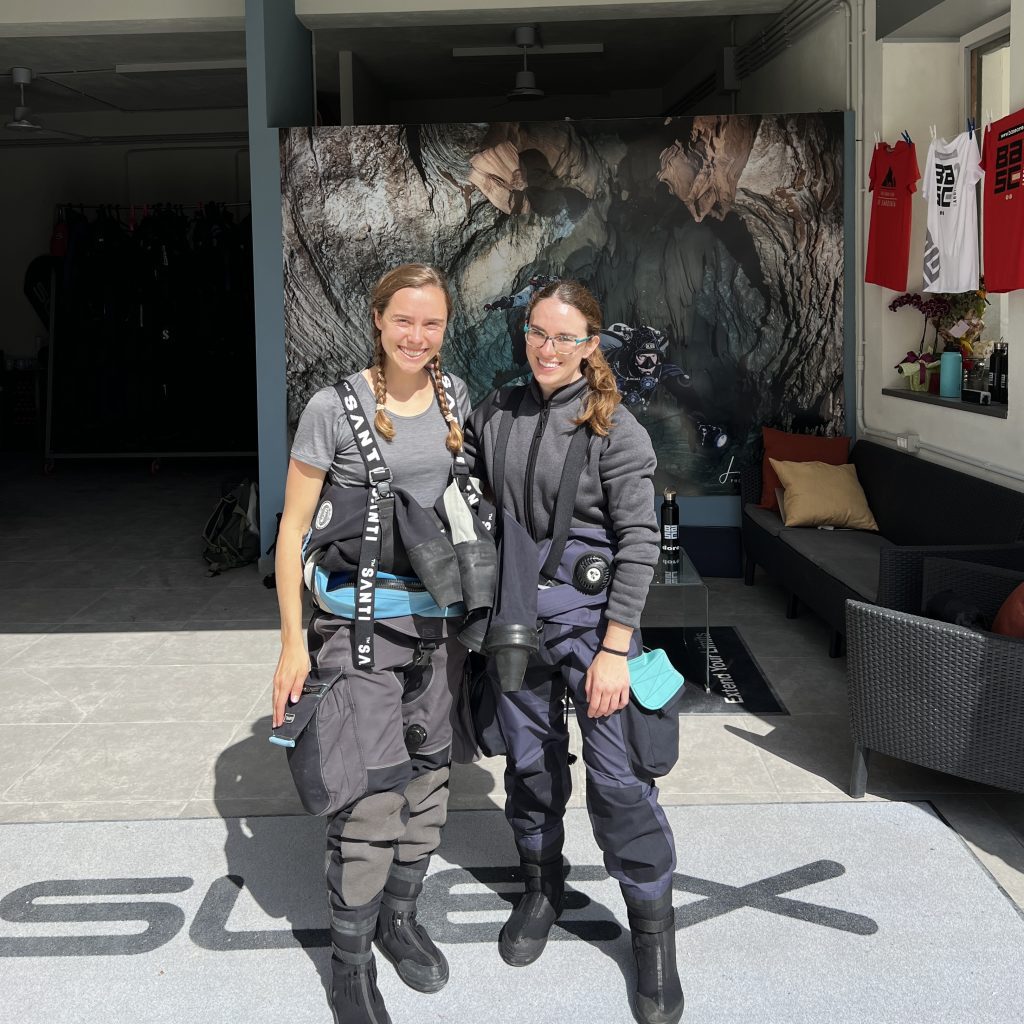
Standardising GUE Projects will make data reproducible across locations and ensure that projects are established, run, and consolidated in the same way (consistent outputs)—and, of course, make sure citizen scientists can see the efforts of their work.
This is already in active development: I’m part of the team creating GUE’s ‘Project Portal’ for the near future – with standardised procedures and resources for recreational to technical diving, alongside step-by-step guides for all aspects of project development. And speaking of recreational diving, I am proud to have spearheaded the NextGen Legacy Project, which began in February 2023.
This is a way for individuals to benefit from the wider-reaching opportunities of the GUE NextGen scholarship: access to GUE courses via supplementing memberships, or invitations to connect with other scientists to partake in standard GUE Projects.
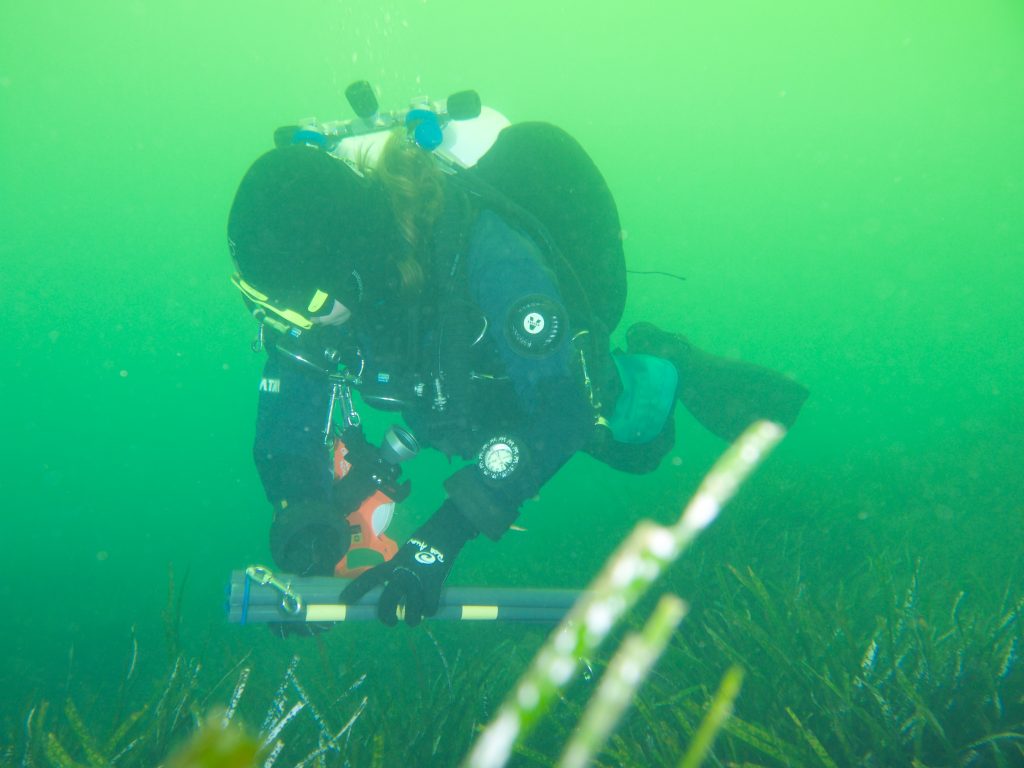
GUE Scientific Diving Instructors are also using their professions to pair GUE diving with other skills, to allow students to apply for European Scientific Diver in the future. For example, Prof. Dr. Diogo Paulo is certifying students with GUE Scientific Diver and other auxiliary training at CCMAR (Centre of Marine Sciences of the Algarve), and Dr. Erik Wurz is helping University of Wageningen students gain a scientific diving course equivalent to European Scientific Diver (as the Netherlands is currently not a full member of the European Scientific Diving Panel). From biodiversity analyses to archaeological excavations, a 10-day underwater research technique course in Croatia boosts Dutch scientists from the 50 to 70 dives they need to qualify for the standard ESD level.
There could also be a potential avenue for GUE divers to eventually gain skills in full face masks (one of the missing links between GUE Scientific Diver and European Occupational Standards). Earlier in my Documentation diver course, I was joined by 2 topside documentary makers—Lesley and Sam—who wanted to practise their skills using full-face masks.
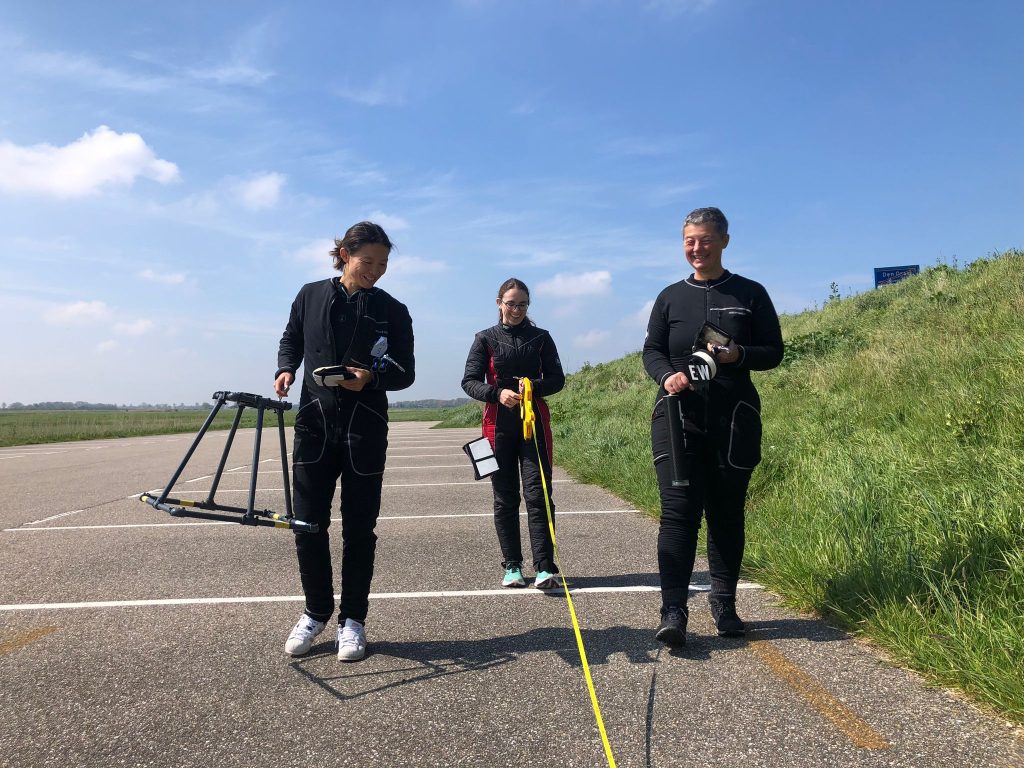

Also sponsored by GUE, their aim was to test a modular full-face mask, enabling long-hose primary donation and thus adherence to GUE gear configurations. Lesley and Sam’s aim was to record real-time human reactions in future exploration documentaries; however, I can see the potential integration of this into Scientific Diver.
No matter what the next years hold for GUE Scientific Diver, and its place in European and worldwide diving standards, this course will continue to provide students with the tools to progress from diving scientist to scientific diver. It has empowered me to do so one day, and I am excited for the future!
DIVE DEEPER
InDEPTH: Finland’s Newly Established Scientific Diving Academy by Edd Stockdale
InDEPTH: OSHA vs. The Houston Aquarium: What Constitutes A Scientific Dive? By Victoria Brown
World Scientific Diving Training Council
Scientific Diving regulatory bodies and courses
Relevant GUE courses

Jenn Thomson is the 2022-23 NextGeneration Scholar for Global Underwater Explorers on a global mission to highlight the roles that recreational scuba can play in scientific operations. From behind-the-scenes astronaut training at NASA, to transiting the Pacific Ocean, to completing the GUE ITC and Scientific Diver courses around Europe, she aimed to use this year to inspire young upcoming divers! Jenn is also an Honorary Research Fellow, scientific illustrator, marine biologist, and diverse field researcher of extreme environments. Last year, she spent five months onboard the OceanXplorer working as a logistic coordinator and expedition scientist on the eDNA, deep-sea coral, and megafauna teams. As an ambassador for sea-to-space company Blue Abyss, Jenn is helping to create a network of next-generation extreme environment, R&D, and training centres around the world. She has radio-tracked everything from elephant shrews to elephants, and her travel bucket list includes parabolic flights.























